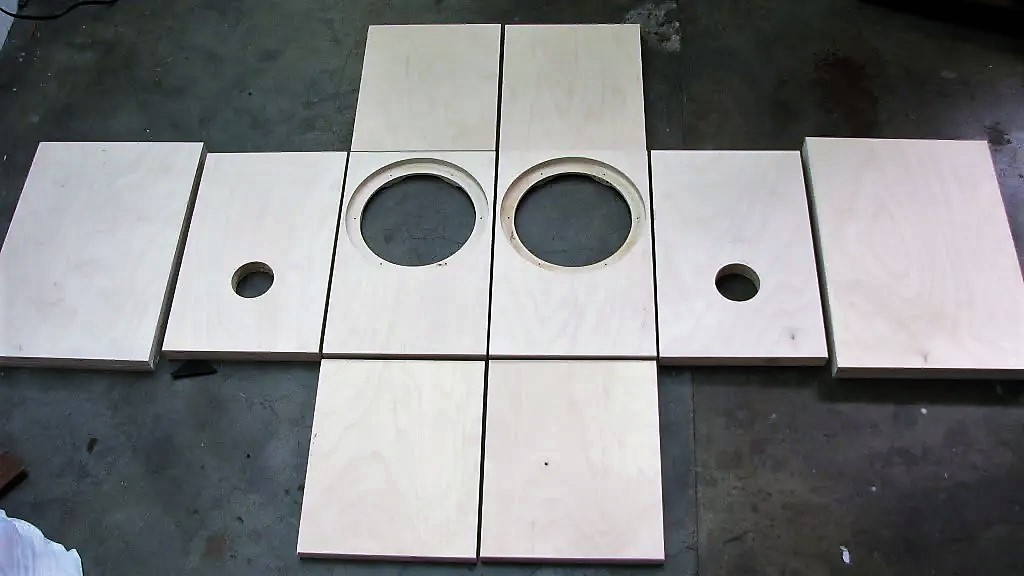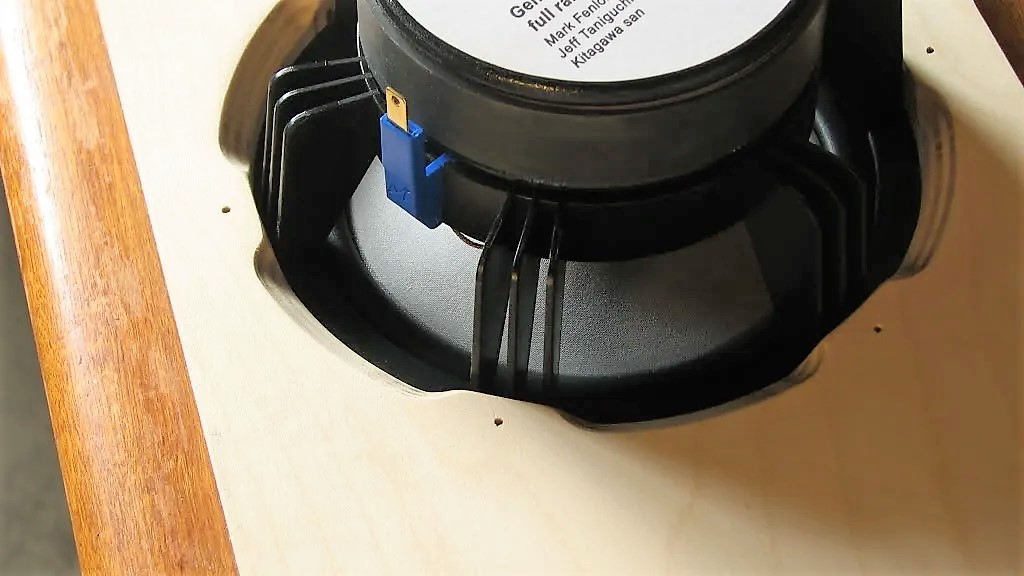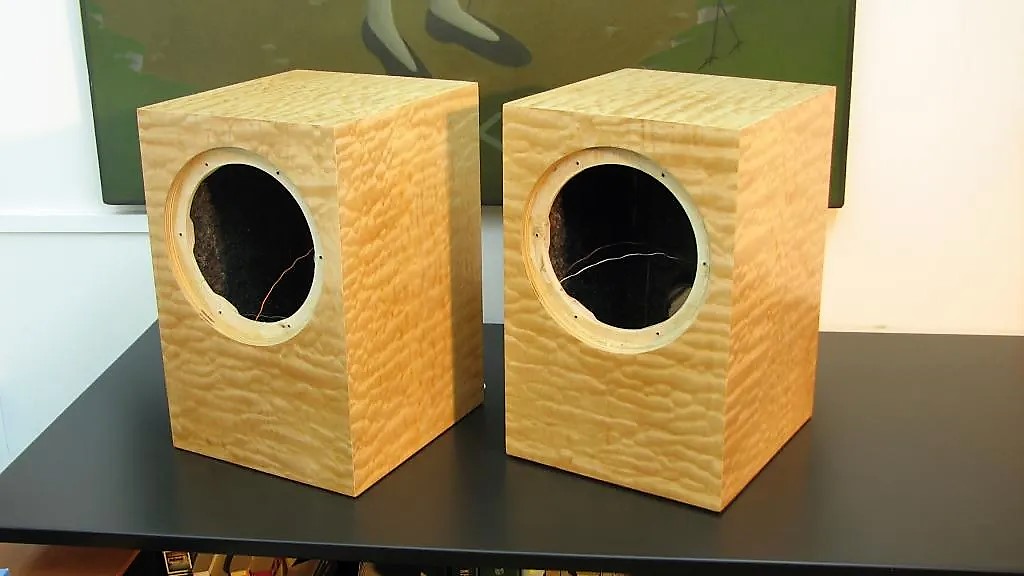Archive
10-Year old SMPS design still an excellent performer
I have been using the CONNEX ELECTRONIC Switch Mode power supply for almost 10 years [link]. Chose this power supply solely based on the theory that it would be a low noise, and suitable for audio applications.
A recent review in ASR describes a TPA-based amplifier, the JLE Sylph-D200 amplifier module, is powered by the single-voltage version of this same power supply [link]. The amplifier can achieve a SINAD number of 95 dB
Here is a photo of the Power Supply from Connexelectronic [link]:

Here is a photo of the power supply from the ASR site:

And here is the Connex SMPS300RE dual polarity power supply that I’ve been using:

You can purchase Connex SMPS directly from the manufacturer, but if you are in the US, purchasing from HIFIMEDIY may be a better option [link]

New Review and In-Depth Analysis of Hypex UCD-180HG
ASR has a new review of this Amp module [link]
Hypex UcD180HG HxR module is an older class D circuit solution which cannot compete in distortion parameters with Ncore or Purifi, however it has several very interesting features. It is a simple circuit, price is about 1/3 of NC400, it has frequency response independent of load impedance and nonlinearity almost independent of frequency. These are features I appreciate much and I have to say I like this module.
Here is my post on this amp [link]. Almost 9 years ago.

The author compares the Hypex amp with a highly popular amp, the AIYIMA 07 which is based on the TI TPA-3255 and can be purchased for about $75 with a power supply. The AIYIMA has also been reviewed at ASR [link]
We can see that AIYIMA has higher distortion which is much more modulated by speaker complex impedance. So it goes, 1kHz 5W SINAD is not everything and worse, it is a bad measure to compare amplifiers.
The distortion numbers are AIYIMA: 0.012 and Hypex: 0.0047% Note also that the measurements are at 5W and the “standard” is at 1W. The author also compares the frequency response and notes the effect of speaker load on the response. In fact, I would prefer the AIYIMA since with age one looses high frequency sensitivity.

The author summarized all his findings comparing the UCD-180HG based amp vs the AIYIMA TPA-3255 based amp in this post [link]
So the main difference remains in frequency response affected by class D amplifier circuit topology. UcD has flat response independent of load, A07 response is load dependent. Might be noted that UcD distortion is also less affected by load and frequency. Might be also noted that none of these features we may read from SINAD 1kHz 5W 4ohm comparative chart.
I am also a fan of the UCD modules. After 10 years, this technology remains competitive in performance and even more in reliability and durability. The people behind UCD (Hypex) were pioneers in class D amplification and continue to produce state of the art audio amplifiers.
This review and analysis also show that 10 years later, high performance audio amplifiers can be had for very little money. A finished AIYIMA amplifier with power supply can be purchased for $75, a fraction of what a UCD-based amp would cost
You can read more about UCD in the IEEE Spectrum article: “The Consumer Electronics Hall of Fame: Philips UcD Audio Amplifier“
Alpair 12p In Cabinets
Previous posts on Alpair 12p: https://hifiduino.wordpress.com/2013/02/02/markaudio-alpair-speaker-drivers/
I purchased from diyaudio: https://www.diyaudio.com/forums/swap-meet/227550-fs-cabinets-mark-audio-12p-monitors-quilted-maple.html many years ago. Lately I have set them up for near field listening on my work desk while working from home. Using a TOPPING DAC [link] and an AIYIMA amp [link]. Nowadays you can get superb electronics for little money. There is no longer any incentive for DIY electronics 🙂
All photos from diyaudio and audiokarma
Baltic Birch plywood construction

Cabinet dimensions
- Front and back baffle are 1″ thick
- Top and bottom are 3/4″ think
- Sides are 5/8″ thick
- 15 1/8″ tall
- 10 3/4″ deep
- 9 15/16″ wide
- Internal volume: 0.6 cu ft
- Port dimensions are 2″ wide by 3 3/8″ long tuning the cabinet to 55hz
- Inset area for driver is 8 1/8″ (close to 8 3/32″) in diameter and 1/2″ deep
- The hole for the driver is 6 5/8″ diameter
- No internal bracing has been used due to the small dimensions
The cabinet internal dimensions are the same as the “vented box – stand mount” cabinet plans from Mark Audio [link]. If we calculate the internal dimensions (taking into account the thickness of the different sides) We get:
- Width = 9 15/16 – 2×5/8 = 8 11/6 = 221 mm. MarkAudio plan: 218 mm
- Depth: 10 3/4 – 2×1 = 8 3/4 = 222 mm. MarkAudio plan: 218 mm
- Height: 15 1/8 – 2×3/4 = 13 5/8 = 346 mm. MarkAudio plan: 345 mm
- Volume: 17 liters = 0.6 cubic-feet. MarkAudio plan: 16.4 liters = 0.58 cubic-feet
Special features
Quilted Maple veneer. Often used for guitar finishes

The veneer is finished with several coats of sanding sealer followed by several of Birchwood Casey gunstock oil. 4 coats were applied with a cloth and each coat rubbed with a a steel wool after waiting 2 hours. A forum member commented that applying an additional 4 layers, it would be “glass smooth”
Internal chamfer for increased air flow (not sure how useful is this feature, but it is a very nice detail)


The speaker connections on the back only accept banana plugs and are press fit into the cabinet for a low profile connection. Internal cabling is a single strand of Cat 5 wire per pole.

Construction Details




Finished Speaker

Reviews of the Alpair 12p
In my listening environment (near-field on work desk), they sound very nice. For my taste, I feel there is some lacking of treble, but the drivers are pretty flat to 20KHz. Perhaps I am loosing high frequency sensitivity. Bass is good and can be enhanced with a larger cabinet, but for this listening position, it is sufficient for my taste. I have thought of using a tweeter to augment the treble but I’ve yet to find anyone in the forums with a good recommendation on which tweeter driver to use and how to integrate. Adding a tweeter seems to come with a lot of side effects.
With near field, listening distance, speaker toe-in and height alignment of your ear with the driver makes a difference (seems obvious)
Review of Alpair 12p in Super Pensil cabinet [link]
So how to they sound? In a word, fantastic! My first impressions are that they are all I could have hoped for. Terrific imaging with wonderful resolution and separation between instruments. Bass is very taut and more than adequate, at least with these types of recordings. I haven’t pushed them with any Zeppelin or Floyd yet, so how they hold up to those demands is yet to be seen. But I really built them for jazz and vocals. I have my modded Klipsch Forte II’s for the heavier stuff, if needed!
Review with small enclosure (similar to the one shown here) [link]
So, how do they sound so far? They have bags of low level detail, a wide, deep soundstage and a crisp, musical and tuneful presentation. Bass isn’t room shaking but it is tuneful, rythmic and not boomy. I’ve been listening to mainly to vinyl- records that I haven’t played for ages and I’m happily letting it run through both sides just enjoying the music.
Review with tall enclosure (Avebury) [link]
Okay, been playing like 150 hours now, and started introducing them to a wider spectrum of music, I started noticing sounds and things, and I start to understand why people are saying that they are unforgiving, one of my favorite tracks is ruined now, as I was able to hear that the guitar sample they use through the whole song must have been from a dirty vinyl, and they repeat the sample for every six seconds or so (afu ra – warfare)
Also been listening a lot to ottmar liebert as it was suggested for running the speakers in with on a other thread, and boy here the speakers really comes to life, set at the right volume and closed eyes, I will be in doubt if there is a guitarist in my room.
Review with open baffle [link]
Enter Full Range, but not in a box…..in an open baffle. After a lot of research, I settled on the Mark Audio Alpair 12P. I had no idea how this would turn out….but what the hell………
My experience from listening to FR speakers in the past was not good. Lack of treble was most noticeable, and the units with whizzer cones sounded brittle to me.
So, the Alpairs have a 500 hour run-in time, and they changed noticeably in the coming weeks. I became more and more impressed as they opened up. I thought to myself ……who needs a tweeter?
Another review with open baffle [link]
My fears from the past would be the roll-off or brittle sounding treble….but no, treble was fine even at this early stage of run-in (they take 800 hours to come fully on song). The mids were clear, dynamic & detailed. I cant comment on the bass as this was being handled by the active 18” woofer now driven by a PA amp form the Behringer stable, an iNuke NU3000DSP. This unit has built in crossover & PEQ.
The imaging on these babies was also in a different league.
I Have Golden Ears…
BARELY…
Some parts are very easy and some parts are hard for me. But with mid-century ears, I am happy they still work reasonably well. The hardest part for me was the MP3 artifacts in the Silver Ears test. I was stuck there for a long while and had to focus on minute details.
To pass the Golden Ears Test, I had to cheat in the Frequency Bands Test (I used two computers). I didn’t have the patience to train myself to distinguish between the different frequency bands. The boost or cut at the different bands are very easy to hear, but deciding which band is not easy. I feel brute force memorization would have allowed me to pass without cheating 🙂
The test was fun, but can take some time, especially since every mistake takes away points and every test reloads the sample tracks in order to randomize the order. In other words, you can’t really get the award by trial and error.
All the tests are A/B tests and even so, certain details are very hard to detect. Makes you wonder how much change reported by our modifications and improvements are really audible. To me the pursue of DIY audio is more for the love for good audio engineering than for “better” (audible) reproduction because there is definitely a point where further improvements are not audible, especially for “mid-century” ears like mine. And they are “Golden Ears” nonetheless.
I encourage all DIY audio hobbyist to try the test: https://www.goldenears.philips.com/en/index.html
OTHER REPORTS ON THE TEST
Free High-Res from Linn
The good people at Linn are doing the free-song-a-say Hi-Res Give away again this year [link]
Very nice Christmas present from Linn…
(missed the first few days…)
HifiDIY ES9018 DAC Measurements
When I asked HifiDIY if it would be possible to do some measurements on the board they were going to sell me (see here [link]), they agreed and they sent me the results. Here are the measurement results:
Source level, bit depth and sample frequency
- 0dBFS = 18.65dBu =0dBr, 24Bit/48kHz
- Spdif input
S/PDIF Input Lock Range (the only input to the board is SPDIF)
- Lower 30mV (P-P), 5nS Rise
- Typical 200mV (P-P), 60nS Rise
- Upper 2V (P-P), 100nS Rise
Dynamic Range
- 131dB, -90dBFS, A-Weighted
- 128dB, -90dBFS, Unweighted
IMD
0.0003% (-110dB) @ CCIF / 20kHz BW Unweighted
0.0001% (-119dB) @ SMPTE / 20kHz BW Unweighted
THD+N
0.00065% (-104dB )@ 1kHz / 20kHz BW Unweighted
Noise
2.5uV RMB (-110dBu) @ 20kHz BW Unweighted
2uV RMB (-112dBu) @ 20kHz BW A-Weighted
Cross-talk
-152dB @ 1kHz, -160dB @ 20Hz, -120dB @ 20kHz (Worst Case)
Amplitude Linearity
Deviation +/-0.1dB @ -120dBFS
Deviation +/-0.5dB @ -133dBFS
JITTER MEASUREMENTS
I am not quite familiar with these measurements. Thus, not quite sure how to interpret these numbers and how they compare with other DACs.
J-Test
Inferred Jitter
52pS (P-P) @ 5.1Hz Sideband
4.8pS (P-P) @ 42.1Hz Sideband
Jitter Rejection
82dB (>10 000 Times Attenuate Jitter)
Low Cost Silicon Labs Programmable Oscillator
This is a breakthrough product/service for “hard to get” digital audio-specific frequencies.
~$5-$8
[link]
VISHAY VAR Z-Foil Audio Resistor
From the Hifidiy forum. Now that the people are waiting for the ESS DAC boards, people are just planning on what components to use.
Apple Remote Catching On…
I would like to think that I was the first to use the Apple Aluminum Remote to control a DAC or audio equipment. I see others now doing the same 🙂

Mytek Digital [link]
Resonessence [link]
SDTrans [link]






















Latest Comments